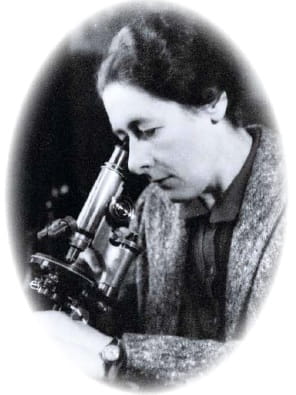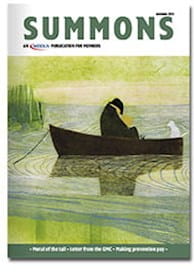 KNOWN as “the lady”, Dorothy Russell broke ground in many areas – not least as the first woman in Western Europe to occupy a medical chair of pathology. As a scientist, her achievements were significant and of practical importance: for example, she showed how new brain smear techniques could be used for diagnosis during a brain operation. She was also one of the first pathologists to grow tumour cells in culture (e.g. astrocytoma) which was important in showing the origin of meningiomas.
KNOWN as “the lady”, Dorothy Russell broke ground in many areas – not least as the first woman in Western Europe to occupy a medical chair of pathology. As a scientist, her achievements were significant and of practical importance: for example, she showed how new brain smear techniques could be used for diagnosis during a brain operation. She was also one of the first pathologists to grow tumour cells in culture (e.g. astrocytoma) which was important in showing the origin of meningiomas.
Dorothy was born in Sydney, Australia. Her father died when she was three and her mother remarried but died two years later. Dorothy and her sister were sent to live with her mother’s sister and clerical husband near Cambridge. Despite this early family tragedy Dorothy emerged from Perse school as a self-confident young woman. Her academic excellence and character won her a place at Girton College, Cambridge. After a first in zoology she spent 1918-19 studying medical entomology on a Gilchrist scholarship. She had long wanted to be a medical scientist and her ambition coincided with Government policy that encouraged women to become doctors to replace the dreadful losses of the war years.
Dorothy entered the London Hospital Medical College in 1919 and qualified in 1923. She won the Sutton Prize in Pathology and the Clinical Obstetrics and Gynaecology Prize. She also had sufficient toughness to counter the considerable prejudice against women doctors and the reluctance of the University of Cambridge to award degrees to women. It was not until 1942 that she received her BA from the university.
An important influence on Dorothy’s career was the pathologist Professor HM Turnbull, chair of morbid anatomy at the London. Under him she studied renal disease. She published a paper on Bright’s disease, which was the basis of her MD thesis. She then joined the Medical Research Council as a staff member, where an Australian neurosurgeon Hugh Cairns was working. He sparked an interest in neuropathology which Dorothy was to follow for the rest of her career. A Rockefeller Scholarship enabled her to work with FB Mallory in Boston then Wilder Penfield in Montreal. She retained her MRC position until 1939.
During the war she worked as a civilian in a neurosurgical unit in Oxford commanded by Cairns, now a brigadier. At the University she experimented with new techniques of staining with metallic impregnations, and the use of antiseptics (such as sulphonamides and the newly discovered penicillin) on the brain. She also studied the effect on the brain of acrylic resin used in surgical closure of the skull. Her scientific work in Oxford was significant.
Cairns wished her to remain in his department but she had other ambitions and returned to London to work for Turnbull and replaced him as Professor in 1946 and as head of the Bernard Baron Institute of Pathology. She had begun work on the pathology of hydrocephalus in Oxford and this was published in 1949 by the MRC – Special Report 265: Observations on the Pathology of Hydrocephalus. In it she cut away jargon like ‘idiopathic’ and rejected nebulous theories and wrote: ‘As far as possible the facts have been allowed to speak for themselves and the theories have been allowed to drop into the background… the immense variety of pathological lesions have this single feature in common: all create an obstruction in some point in the pathway of the cerebrospinal fluid.’
Later she wrote a classic book with a pupil LJ Rubinstein, Pathology of Tumours of the Nervous System, which was published in 1959. The beauty of the book was that it simplified Barclay and Cushing’s classification of brain tumours, particularly gliomas, and served as a valuable guide for clinicians.
Dorothy took great interest in her students and was an active supporter of their careers: at least a dozen of her pupils or junior staff became professors. Among the awards she received were the John Hunter medal and Triennial Prize of the Royal College of Surgeons in 1934, and the Oliver-Sharpey prize of the Royal College of Physicians in 1968. She was also a fellow of the Royal College of Pathologists.
Dorothy was a very private person; probably few people knew that she suffered from epilepsy. She retired in 1960 to Westcott near Dorking in Surrey where she enjoyed gardening and music. She was also an early supporter of Amnesty.
Julia Merrick is a freelance writer and editor
PHOTO: THE ROYAL LONDON HOSPITAL ARCHIVES AND MUSEUM
This page was correct at the time of publication. Any guidance is intended as general guidance for members only. If you are a member and need specific advice relating to your own circumstances, please contact one of our advisers.
Read more from this issue of Insight

Save this article
Save this article to a list of favourite articles which members can access in their account.
Save to library